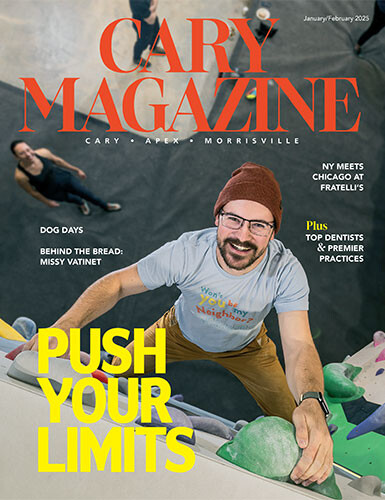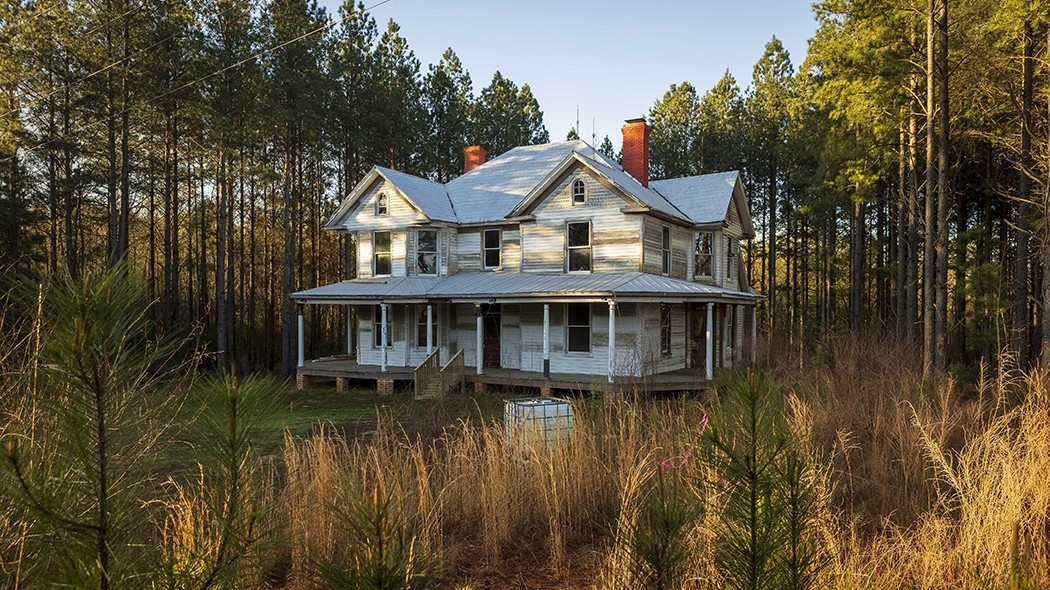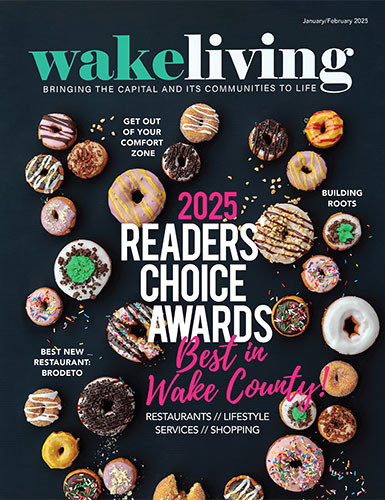Once upon a time, Cara Powell married her Prince Charming and decided she wanted to help other brides create their own fairy-tale weddings.
“In 2017, I met my now husband, who’s absolutely amazing, and then exactly a year to the day we got married,” she said. “We just have this really amazing, magical love story.”
Her latest adventure has been full of magic moments and a few dragons to slay as well. For more than a year, Powell has been preparing to transform the historic Upchurch-Williams house and nearly 6 acres of pastoral surroundings into The Upchurch, a wedding and event venue in Apex.
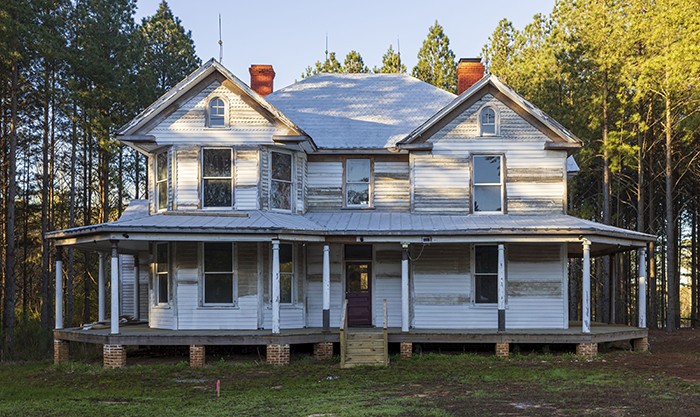
Following her heart
It’s important to know that Powell’s entrepreneurial streak runs right through her heart. More than 16 years ago, the self-described romantic fell in love with wedding photography at her first assignment.
“I just loved being there for people in such a vulnerable and intimate time, and I just felt like it was what I was meant to do,” she said.
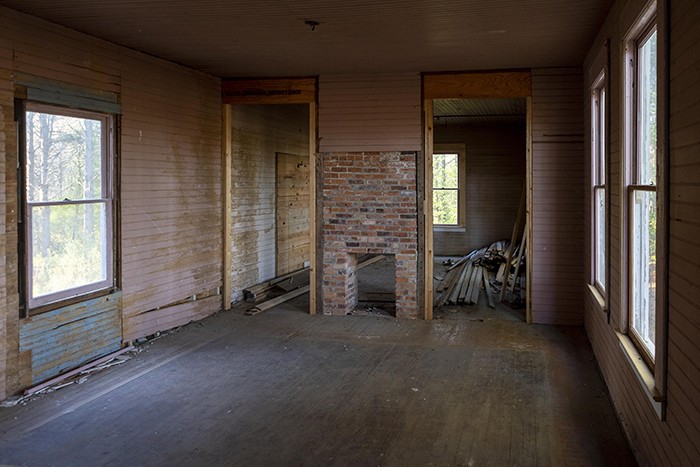
According to Capital Area Preservation, the Upchurch-Williams House is an example of the transitional Queen Anne Colonial Revival style built throughout Wake County in the period when the switch from cotton to tobacco brought local farmers a notable level of prosperity.
She launched f8 Photo Studios, and the business did well, keeping her very busy. But after her own wedding, Powell wanted to spend more time with her husband, Brad, and two step-daughters, Julia, 10, and Brooke, 5. Plus, the work was physically exhausting.
“It is a lot of work to shoot a wedding,” she said. “You’re up, you’re down, you’re squatting, you’re on the ground, you’re up on chairs. I mean, it’s 10 hours a day on concrete. It’s crazy.”
Running an event venue checked all the boxes. The business was still in the wedding industry; she would have a better work-life balance. And because Powell had worked with brides for years, she could look at a location from their point of view.
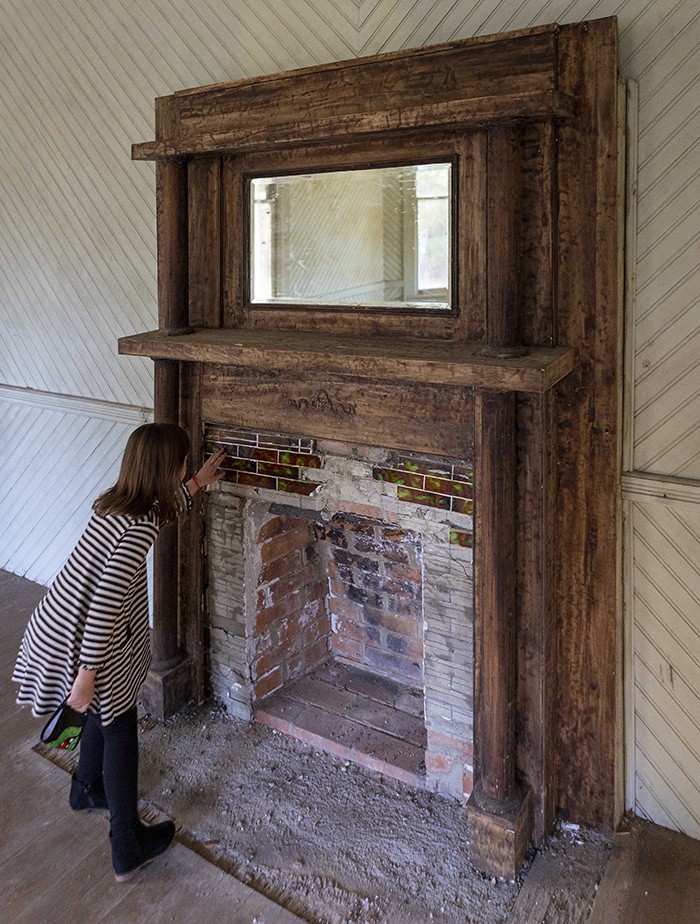
Brooke Powell, 5, takes a close look at one of the fireplaces original to the home.
“I’ve shot weddings all over the world, so I’ve seen every type of venue that you can imagine,” Powell said. “I know what a lot of the complaints are, the pitfalls, what’s great, what’s not. I just really had a vision for it.”
A magic moment
For her new enterprise, she wanted a historic property, something reminiscent of her childhood in Charleston, S.C. By 2019, several buildings were on her radar, including the Upchurch-Williams house, but Powell hadn’t settled on anything yet.
That is, until a chance meeting with a local real estate agent.
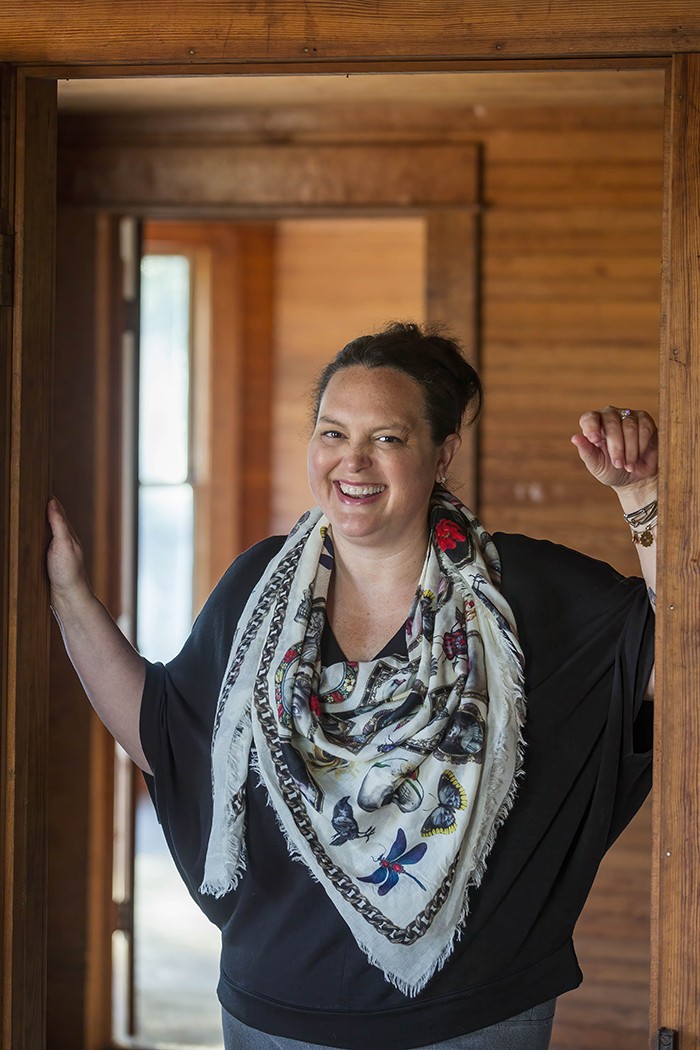
Cara Powell, who owns f8 Photo Studios, launched this project to be able to spend more time with her family. “The goal is to try to create more work-life balance, and owning something on this scale, it takes Cara Powell off the radar, so to speak, and the house can speak for itself,” she says.
She was taking his picture, chatting about the Upchurch-Williams house, how she couldn’t stop thinking about it, but wasn’t sure it was a good fit. He stopped her, explaining that his firm was working with the owners to sell the land, separate from the historic home.
“I was like, ‘No, no, they can’t do that!’ Because I needed (the land), if I was going to use it for a venue. I literally called them that afternoon. I’m like, ‘You can’t subdivide! Let me see it.’ And so that was the start of it,” Powell said.
“I swear it was kismet.”
Originally built in 1905, the Upchurch-Williams house was a private home until 2014, when the last occupant died. The heir donated the house to Capital Area Preservation, with a stipulation that the nonprofit would move the house to a different plot of land, which was included in the gift. CAP removed the modern updates, took the house back to its 1905 footprint, stabilized the remaining structure, and in 2015, moved the house to its present location on Roberts Road.
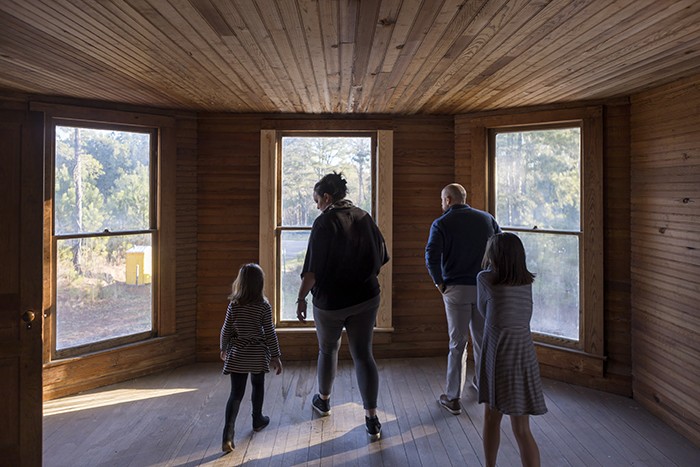
Cara and Brad Powell tour the house with Julia, 10, and Brooke, 5. Architectural details, like the bay windows and wraparound porch, were big selling points for the historic home.
There it sat.
The property was large and needed a great deal of work, both daunting prospects for a private owner. Commercial buyers were reluctant as well, because the property was zoned residential. So, when Powell called that afternoon, CAP was ready to make a deal.
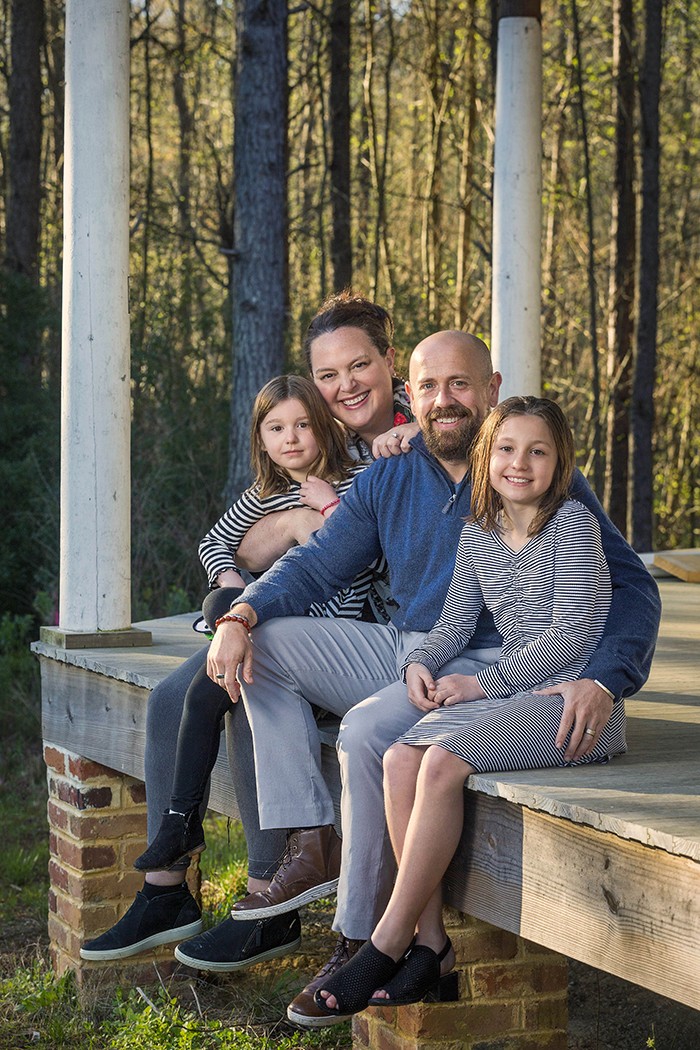
Fighting dragons
It took several months to get the property rezoned for an event venue, but in January 2020, Powell bought the property for $460,000. At the time, she expected to spend about $500,000 to renovate the house and another $500,000 to build an adjoining event space.
That turned out to be optimistic. Even if a global pandemic hadn’t hit a few months after she signed the contract, working with a historic property would have been challenging enough.
Ethan Page, architect at Maurer Architecture, says his firm had to gain approvals from Capital Area Preservation and the Wake County Historic Board. Incorporating a second building on the property was particularly tricky.
“There’s actually a historic easement around the house that we couldn’t build the venue building within that easement,” Page said. “We explored an option early on where the venue building was going to be closer to the street, but ultimately it ended up lower on the site.”
In order to stay true to the historical significance of the house, the modern conservatory had to be built away from the house, out of sight. That meant Powell had to landscape more than the two acres around the house, driving up site preparation costs. And because of COVID, the price of construction materials also skyrocketed.
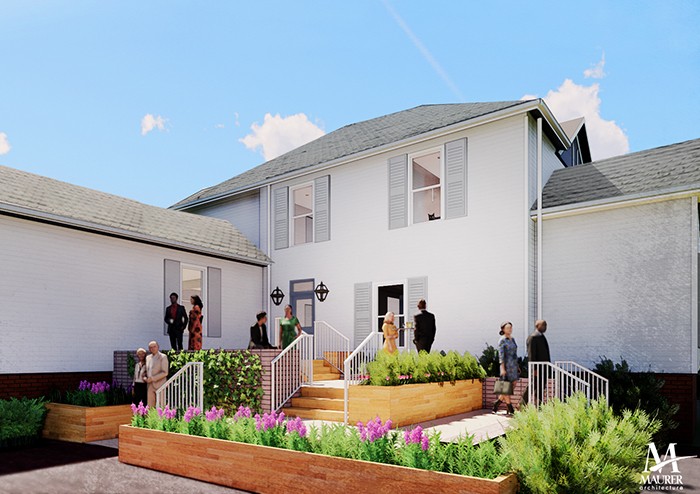
Renderings of The Upchurch show how weddings and receptions will be staged. Brides will exit the house onto a tiered patio.
But the biggest setback has been sewer access. When she bought the property, she was told she could install a septic system, but that was if the house were to be used as a residence. A commercial property needed to tie into the sewer line.
“Essentially you have this designated Apex landmark, where I’ve invested all this money, and I could not get utilities for my property,” Powell said.
After more than a year of investigating one fruitless strategy after another, the final estimate to hook into the water and sewer line was $350,000 — more than triple the $80,000 she had anticipated.
“There’s been many times where my husband or friends had to talk me off the ledge, from just selling the property and walking away,” said Powell, who estimates she will spend at least $2.5 million on the project.
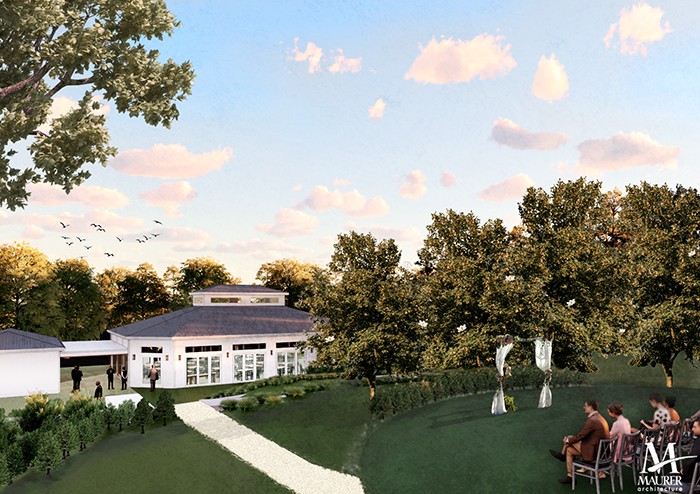
After exiting the patio, brides will walk to the circular wedding lawn.
Looking to a happy ending
At last, she broke ground in April, and construction will take roughly 10 months. Powell is now booking weddings for spring 2022 and hopes to hold 50 events a year at The Upchurch.
“I’m so knocking on wood right now, but I honestly think the worst of it for me is over,” she said. “I think I’ve done so much pre-planning that the hard parts are done.”
The 3,700-square-foot house will contain two dressing suites for the wedding party, and its wraparound porch will be a picturesque stage for photos.
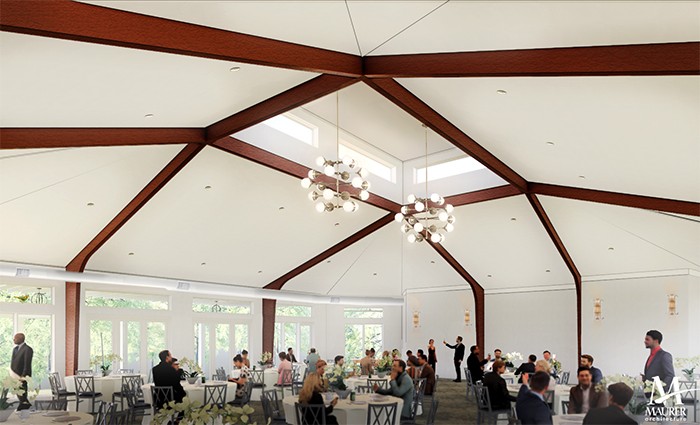
Guests will be welcomed after the ceremony at the conservatory pavilion.
“They’ll have beautiful spaces, to be able to get ready, to do hair and makeup, shoot details, shoot some nice pictures,” Powell said. “Then there’s going to be a tiered patio that the bride will walk down, out the back of the house onto a circular wedding lawn that’s ensconsed in magnolias.”
After the ceremony, guests can enjoy cocktails on the tiered patio or stroll through the house, she says. For the reception, guests will follow a path leading from the house to the 4,900-square-foot conservatory pavilion.
“Being able to bring back this home to its previous glory and saving this property creates such a unique story,” Powell said. “I think the story is really romantic, and it just adds value for a couple looking to set the scene for their big day.”
